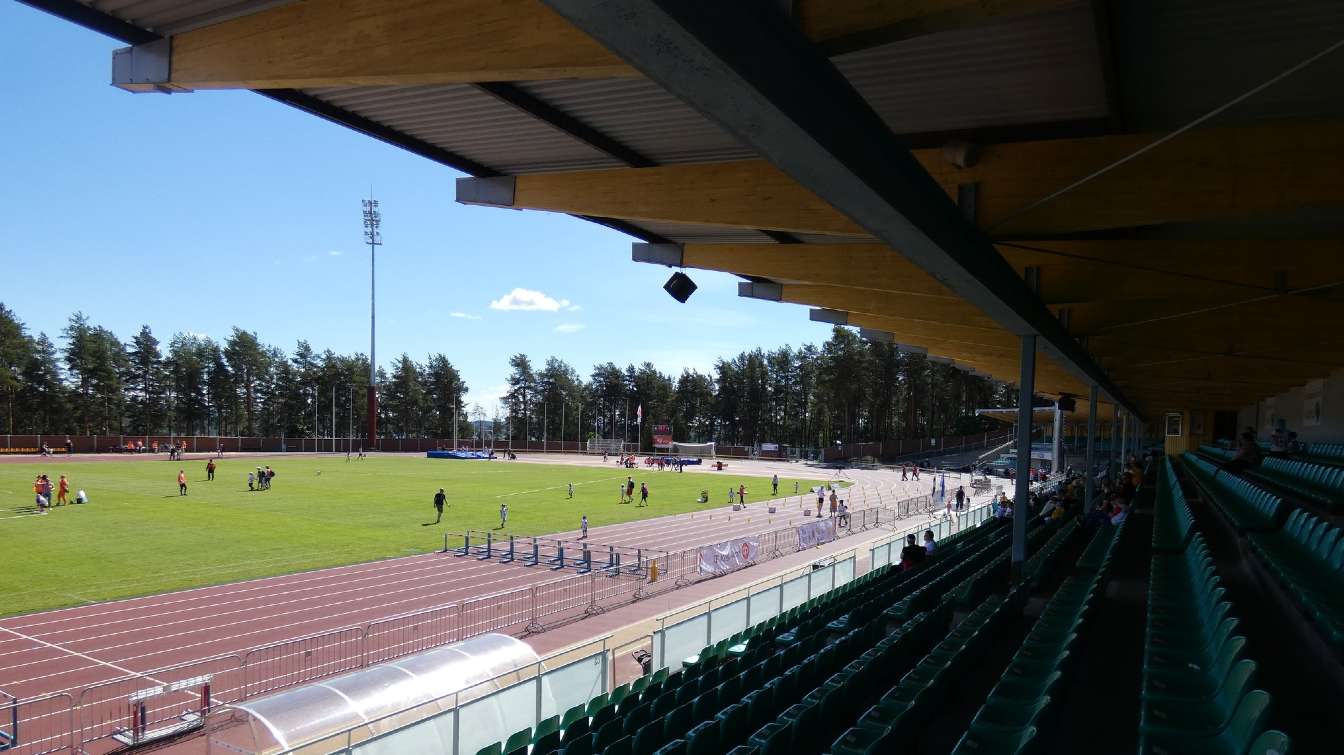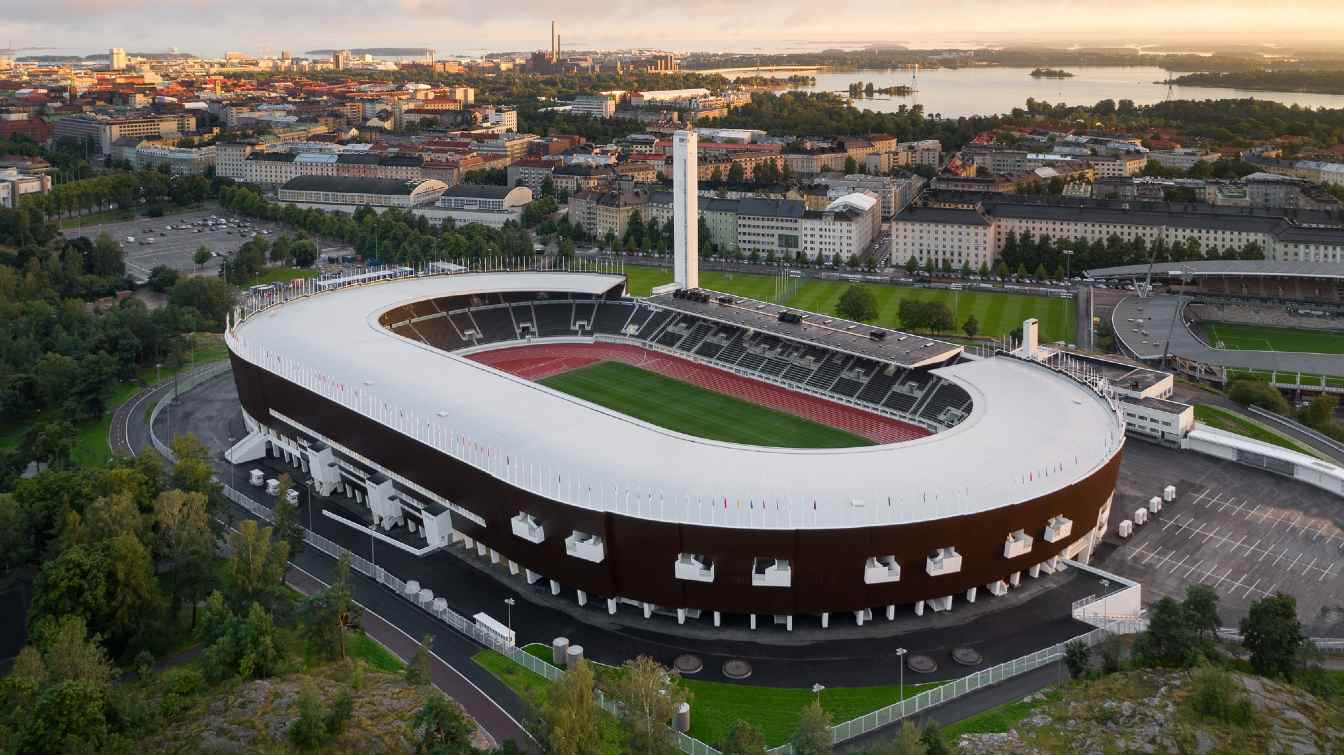Finland: Nearly 100-year-old stadium will undergo massive renovation
source: StadiumDB.com; author: Kuba Kowalski
 After the end of the 2024 athletics season, the classic Harjun Stadium in Jyväskylä will undergo a comprehensive modernization. This historic sports venue, located in central Finland, is set for a renovation worth approximately 13.3 million euros.
After the end of the 2024 athletics season, the classic Harjun Stadium in Jyväskylä will undergo a comprehensive modernization. This historic sports venue, located in central Finland, is set for a renovation worth approximately 13.3 million euros.
Advertisement
Harjun Stadium in Jyväskylä to be modernized after the 2024 season
As part of the stadium's modernization, a new main stand with facilities, a new track for athletes, a new turf for football players, as well as new training facilities and VIP boxes will be constructed. All surfaces will be renewed,
says Anna-Leena Sahindal, the sports director in Jyväskylä.
The renovation is scheduled to begin in autumn 2024 and be completed by summer 2026. Due to the cultural significance of Harjun Stadium, the work must be carried out with respect for its historical heritage. This means that solutions similar to the Tammela Stadium in Tampere, where residential and commercial spaces were built around the sports venue, cannot be implemented. The project does not anticipate commercial revenues.
Local residents and supporters have a keen interest in the renovation of the stadium, which they have known for generations. However, not everyone is looking forward to the return of entertainment at the stadium, as they prefer to find it online. Many of them check out Kasinohai, where they can start playing at the casino immediately, without registering.
On Wednesday, the Finnish government granted 750,000 euros for the stadium's renovation in 2024. This amount comes from the state budget for sports infrastructure, which in 2024 is 25.5 million euros. Finland's total sports budget for 2024 is 165.4 million euros. Support for the construction of sports facilities is significant. Since municipalities face financial difficulties, any support from the state is welcome,
adds Sahindal. The city of Jyväskylä has planned investments in Harjun Stadium amounting to 13 million euros for the years 2024-2025.
 © Wojciech Woźniak | Harjun stadion
© Wojciech Woźniak | Harjun stadion
Almost 100 years of the stadium
Centrally located, albeit in a forested setting, the multi-purpose stadium in the Harju district has a rich history, dating back to 1926. In the early years it was mainly used for athletics and pesäpallo (so-called Finnish baseball), and since 1930 football matches have also been held here. While pesäpallo is no longer organised at the venue, for football it is still the city's main stadium.
Twice in its history, the venue has hosted national athletics championships, in 1950 and 1992. On these occasions it underwent modernisation, the second of which saw the addition of temporary stands with a capacity of up to 10,000 seats. On a day-to-day basis, the facility has one, mostly covered stand on the west side. There are, however, movable stands on the east side, which are used in case of increased demand.
Big plans one year after Harjun Stadium was built
The Stadion Foundation was established as early as 1927, and from the outset its aim was to give Helsinki a sports facility worthy of the Finnish capital. The foundation's architectural competition resulted in the work of Yrjö Lindegren and Toivo Jäntti, which was then sent for realisation.
Construction of Olympiastadion lasted from February 1934 to spring 1938, but the facility was soon to be expanded to accommodate the Olympic Games. Helsinki had aspirations to host the event in 1940, but finally succeeded in 1952. The stands were enlarged to 70,000 seats for the summer event. Shortly after the Games, it was rebuilt once again when it received its current exterior form, with wooden panels. Its simple form is a tribute to the functionalism that underpinned the original design.
 © Wellu Hämäläinen, K2S Architects | Olympiastadion Helsinki
© Wellu Hämäläinen, K2S Architects | Olympiastadion Helsinki
Latest developments at Finland's biggest stadium
Between 2016 and 2020, Olympiastadion was extensively redeveloped. The modernisation of the stadium was geared towards respecting the historic structure of the building and the functionalist aesthetic of 1938. There was no question of adding new buildings to the stadium. For this reason, it was decided to place some of the functionality of the facility underground, so that the changes made would not in any way detract from the stadium's appearance, but only emphasise its unique style.
The most significant change was the replacement of the old rows of benches with new individual seats (however, the woodwork was not abandoned), the extension of the roof of the eastern stand to all other stands and the renewal of the stadium's facade. All these elements, including the seats, are made of Finnish wood. In doing so, a capacity of 36,200 seats was successfully maintained.
The roof structures contain around 3,000 tonnes of steel. The longest single steel beam is 36 metres deep into the stadium. The roof is supported by 80 historic concrete pillars, reinforced with a new concrete coating. The facility's facilities were also modified. In addition to the renovation of existing rooms, completely new rooms were created. For this reason, the stadium was extended by 20,000 m² underground. A surprising solution is the creation of a second athletics track just under the ground.
 © Tuomas Uusheimo, K2S Architects | Olympiastadion Helsinki
© Tuomas Uusheimo, K2S Architects | Olympiastadion Helsinki
Advertisement

 StadiumDB
StadiumDB